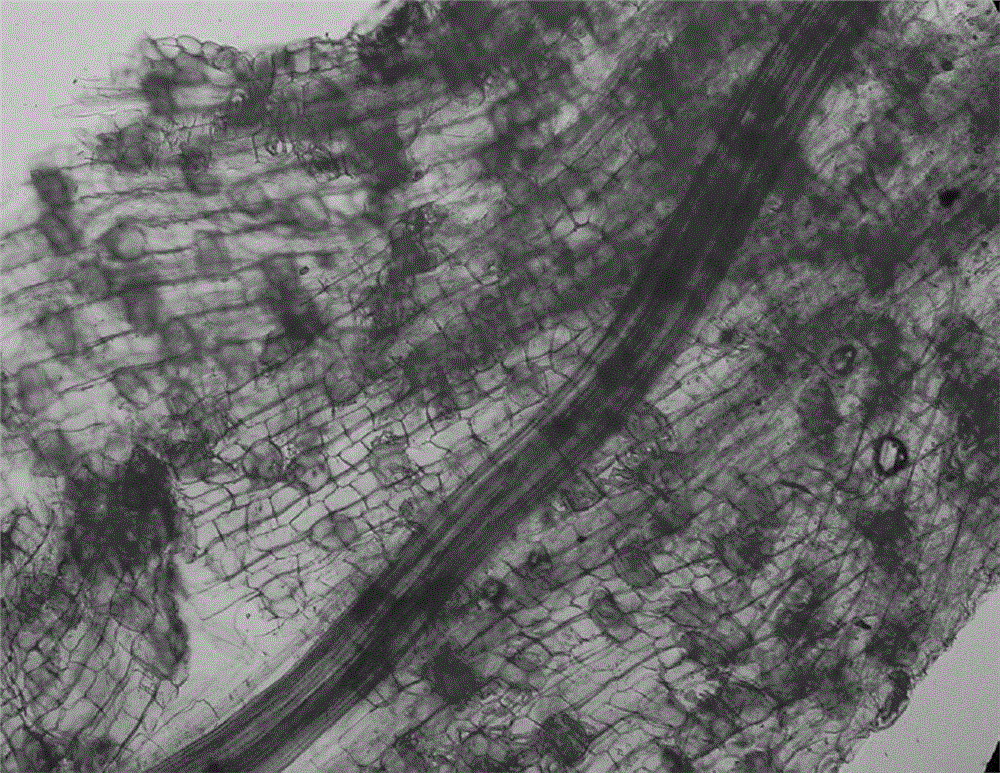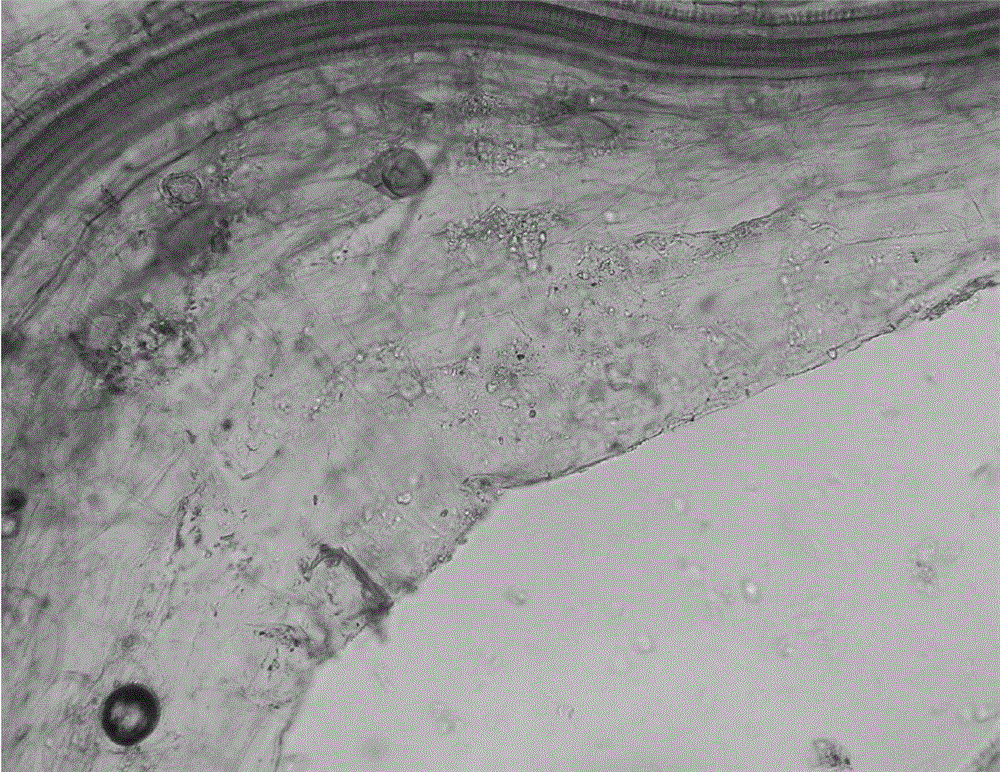Arbuscular mycorrhizal fungal inoculant
A technology for arbuscular mycorrhizal fungi and inoculants, applied in the field of microbial inoculants, can solve the problems of high technical content, limited application of AM fungi, low infection rate and spore density, etc., and achieves the effect of high infection rate
- Summary
- Abstract
- Description
- Claims
- Application Information
AI Technical Summary
Problems solved by technology
Method used
Image
Examples
Embodiment 1
[0023] (1), germination:
[0024] Host plant selects white clover (scientific name: Trifolium repensL) and Radix Ophiopogon japonicus (scientific name: Ophiopogon japonicus (Linn.f.) Ker‐Gawl.), host plant seeds (white clover seeds and Radix radix seeds) in 5% sodium hypochlorite solution Soak for 15 minutes, take it out, blot it dry with absorbent paper, rinse it with sterile water ten times, place it on a sterile filter paper moistened with sterile water in a sterile petri dish, and incubate in dark at 28°C until the seeds germinate.
[0025] (2) Preparation of matrix and culture container:
[0026] After passing the construction river sand through a 1mm sieve, it is fully mixed with soil (ordinary farmland soil) at a mass ratio of 3:1, and used as a culture substrate for the growth of host plants and the proliferation of AM fungi;
[0027] Wipe the inside and outside of the culture container (paper cup or small flowerpot) with 75% alcohol three times, and then place it und...
PUM
 Login to View More
Login to View More Abstract
Description
Claims
Application Information
 Login to View More
Login to View More - R&D
- Intellectual Property
- Life Sciences
- Materials
- Tech Scout
- Unparalleled Data Quality
- Higher Quality Content
- 60% Fewer Hallucinations
Browse by: Latest US Patents, China's latest patents, Technical Efficacy Thesaurus, Application Domain, Technology Topic, Popular Technical Reports.
© 2025 PatSnap. All rights reserved.Legal|Privacy policy|Modern Slavery Act Transparency Statement|Sitemap|About US| Contact US: help@patsnap.com



